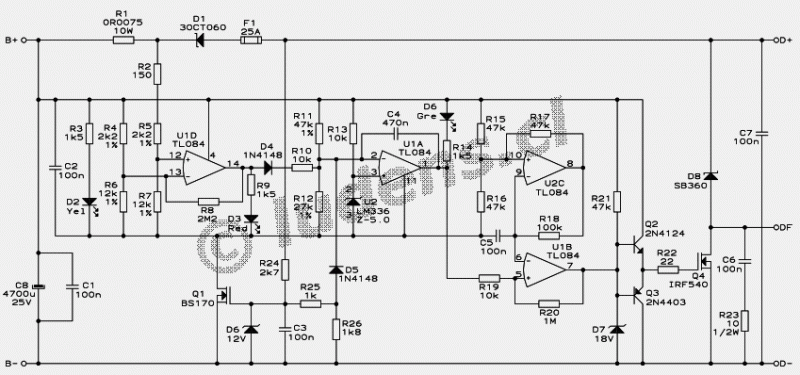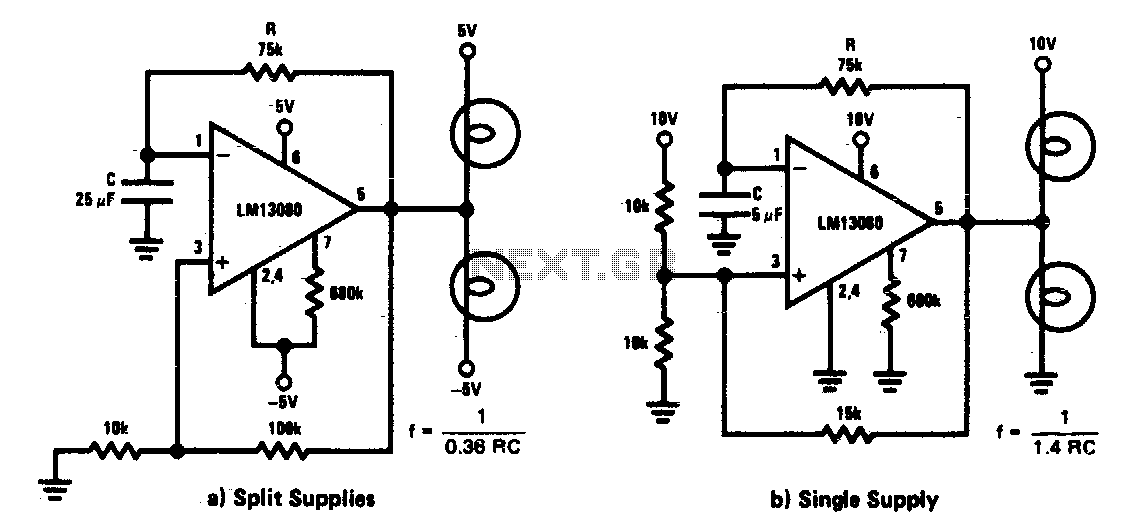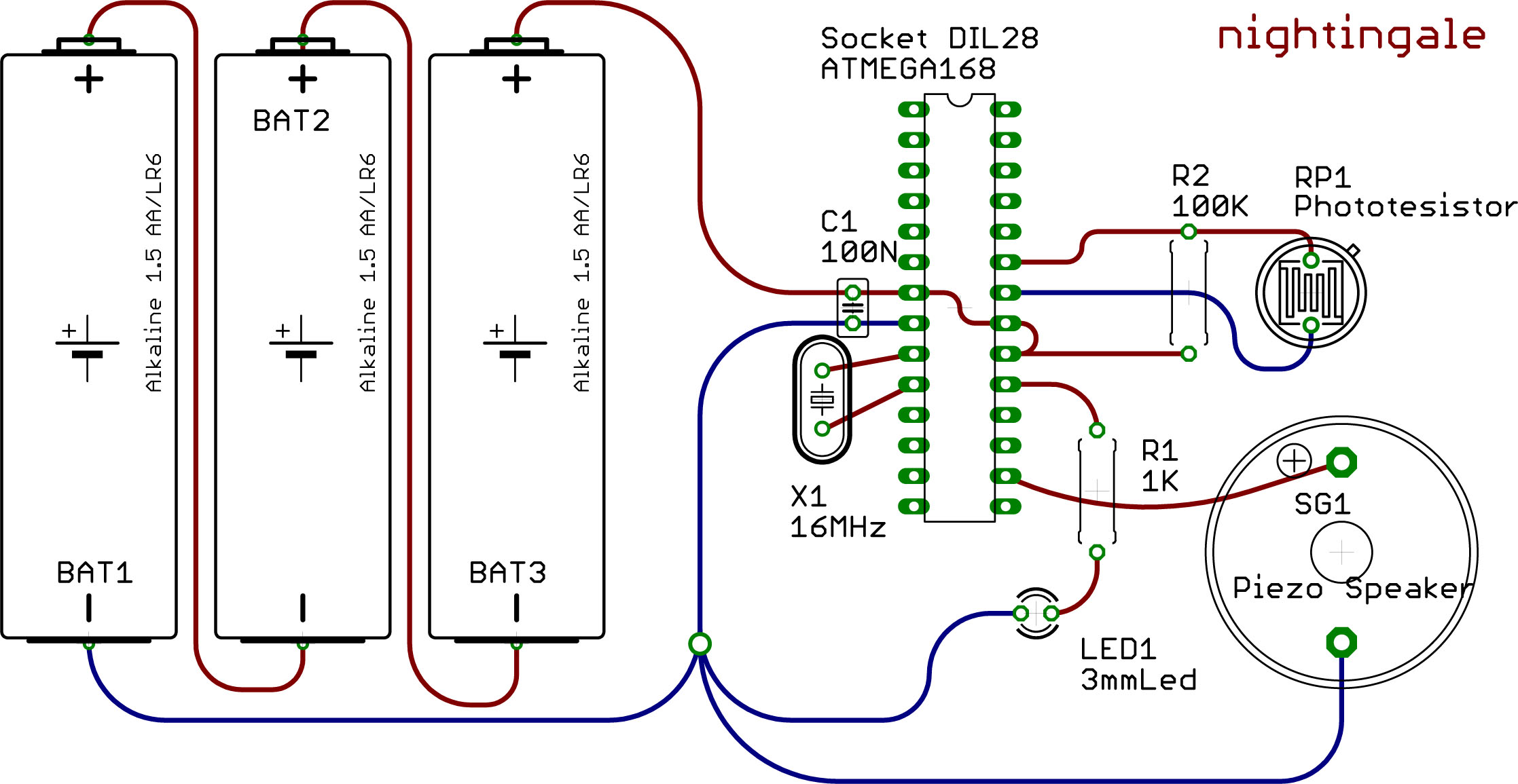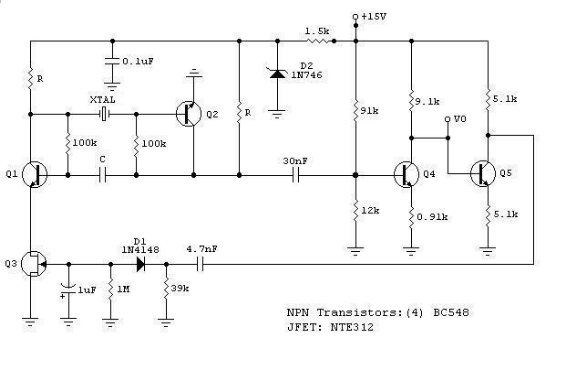
3v low battery voltage flasher

Many battery-powered devices utilize two AA alkaline cells. Often, the user is unaware of when to replace the batteries until the device ceases to operate. The hobby circuit described below can be connected to a 3V battery, providing a warning when the battery is nearing the end of its life. It will flash an LED when the battery voltage drops to approximately 2.4 volts. The electronic circuit consumes only 1 µA of current in standby mode and increases to 20 µA during the flashing operation, allowing it to be safely included without significantly depleting the battery energy. A voltage detector integrated circuit (IC) from Panasonic (with similar devices available from Microchip) is employed to monitor the battery voltage. The device's open-drain output goes low when the battery voltage falls below 2.4 to 2.5 volts. This action activates a two-transistor oscillator circuit, which drives the LED with brief current pulses lasting only 2 ms. This flasher circuit was published in the January 2 issue of EDN magazine in 1997.
The described circuit operates as a battery voltage monitor and alert system, specifically designed for devices powered by two AA alkaline cells. The voltage detector IC continuously monitors the battery voltage levels, ensuring that users are alerted before the battery reaches a critically low state. The selection of a voltage threshold at approximately 2.4 volts is strategic, as it provides a balance between maximizing battery life and ensuring reliable operation of the connected device.
In standby mode, the circuit's low power consumption of 1 µA ensures minimal impact on battery life, making it suitable for long-term applications. When the voltage drops below the specified threshold, the voltage detector's open-drain output transitions to a low state, activating the oscillator circuit. This oscillator is configured using two transistors, which work together to create a pulsing signal that drives the LED. The brief current pulses of 2 ms are sufficient to produce a visible flash from the LED without drawing excessive current, which would otherwise accelerate battery depletion.
The implementation of this circuit is straightforward, requiring minimal components and allowing for easy integration into existing battery-powered devices. The use of a voltage detector IC simplifies the design and enhances reliability, as these components are specifically designed for monitoring voltage levels. Overall, this circuit serves as an effective solution for providing users with a visual indication of battery status, thereby preventing unexpected device failures due to depleted batteries.Many battery powered devices use two AA alkaline cells. Often you will not know when it is time to replace the batteries until the device powered by them actually stops operating. The hobby circuit below can be connected to a 3v battery, to give you some warning when the battery is nearing its end of life.
It will flash a LED when the battery volt age drops to about 2. 4 volts. The electronic circuit draws only 1ua of current in standby mode and jumps to only 20ua when flashing, so it can safely be included without depleting the battery energy. A voltage detector IC from Panasonic (Microchip also makes similar devices) is used to monitor the battery voltage.
The device`s open drain output swings low, when the battery voltage is below 2. 4 to 2. 5 volts. This action turns on the two transistor oscillator circuit, which drives the LED with short current pulses lasting only 2ms. I published this Flasher circuit in the January 2 issue of EDN magazine in 1997. 🔗 External reference
The described circuit operates as a battery voltage monitor and alert system, specifically designed for devices powered by two AA alkaline cells. The voltage detector IC continuously monitors the battery voltage levels, ensuring that users are alerted before the battery reaches a critically low state. The selection of a voltage threshold at approximately 2.4 volts is strategic, as it provides a balance between maximizing battery life and ensuring reliable operation of the connected device.
In standby mode, the circuit's low power consumption of 1 µA ensures minimal impact on battery life, making it suitable for long-term applications. When the voltage drops below the specified threshold, the voltage detector's open-drain output transitions to a low state, activating the oscillator circuit. This oscillator is configured using two transistors, which work together to create a pulsing signal that drives the LED. The brief current pulses of 2 ms are sufficient to produce a visible flash from the LED without drawing excessive current, which would otherwise accelerate battery depletion.
The implementation of this circuit is straightforward, requiring minimal components and allowing for easy integration into existing battery-powered devices. The use of a voltage detector IC simplifies the design and enhances reliability, as these components are specifically designed for monitoring voltage levels. Overall, this circuit serves as an effective solution for providing users with a visual indication of battery status, thereby preventing unexpected device failures due to depleted batteries.Many battery powered devices use two AA alkaline cells. Often you will not know when it is time to replace the batteries until the device powered by them actually stops operating. The hobby circuit below can be connected to a 3v battery, to give you some warning when the battery is nearing its end of life.
It will flash a LED when the battery volt age drops to about 2. 4 volts. The electronic circuit draws only 1ua of current in standby mode and jumps to only 20ua when flashing, so it can safely be included without depleting the battery energy. A voltage detector IC from Panasonic (Microchip also makes similar devices) is used to monitor the battery voltage.
The device`s open drain output swings low, when the battery voltage is below 2. 4 to 2. 5 volts. This action turns on the two transistor oscillator circuit, which drives the LED with short current pulses lasting only 2ms. I published this Flasher circuit in the January 2 issue of EDN magazine in 1997. 🔗 External reference





